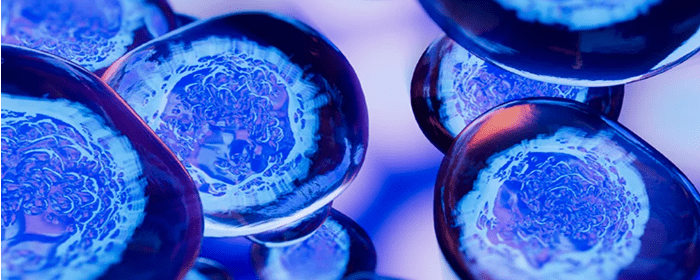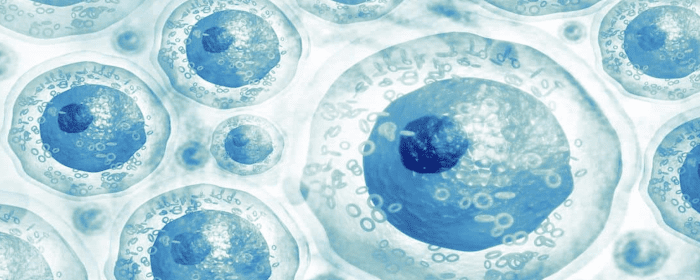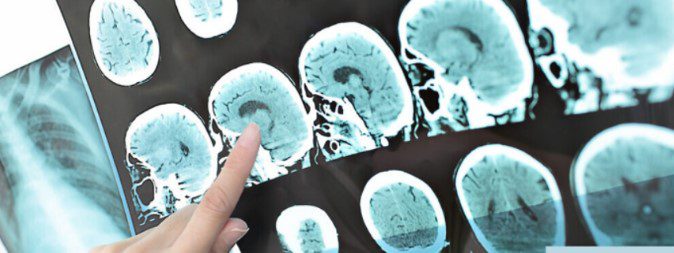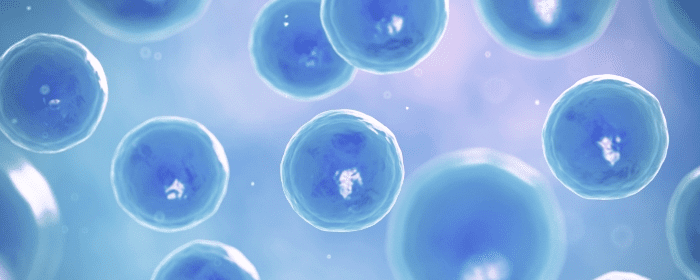
by admin | Sep 6, 2023 | Multiple Sclerosis, Mesenchymal Stem Cells, Regenerative Medicine, Stem Cell Research, Stem Cell Therapy
Multiple sclerosis (MS) is a progressive auto-immune disease that affects the central nervous system (CNS). Currently, it is estimated that nearly 2 million people worldwide are affected by MS.
Characterized by the body attacking the myelin (the protective sheath that covers the nerve fibers), MS causes communication issues between the brain and the rest of the body. As the nerves continue to deteriorate, the condition can cause permanent damage.
Currently, there is no pharmaceutical treatment for MS, only medications that treat the symptoms of the condition.
In the field of regenerative medicine, mesenchymal stem cells (MSCs) have emerged as a candidate that could potentially treat a number of diseases, including MS. Specifically, MSCs have anti-inflammatory effects and have demonstrated the ability to differentiate in order to target the overactivity and self-antigen attacks observed in the development and progression of MS.
As part of this review, Alanazi et al. reviewed a number of clinical trials that have utilized MSCs isolated from a variety of sources, including peripheral blood, bone marrow (BM-MSCs), adipose tissue (AD-MSCs), umbilical cord (UCMSCs), and the placenta, in order to better understand their potential as a treatment option for MS.
An analysis of these clinical trials led the authors of this review to the consensus that MSCs appear effective in inhibiting CD4+ and CD8+ T cell activation, T regulatory cells, and macrophage switch into the auto-immune phenotype.
Further analysis of the specific MSCs used to treat MS by Alanazi et al. indicates that while BM-MSCs, AD-MSCs, and UCMSCs all demonstrate beneficial effects when applied to the treatment of MS, UCMSCs appear to be the best option.
According to the authors, UCMSCs demonstrate faster self-renewal than other MSCs, are able to differentiate into three germ layers, and can accumulate in damaged tissue or inflamed areas. Additionally, UCMSCs are also among the easiest MSCs to source, demonstrate a high concentration of MSCs, are safe and inexpensive, and are not associated with ethical issues.
Based on the information reviewed, Alanazi et al. recommend emphasizing the clinical utility of UCMSCs for regenerative medicine and immunotherapy, including for the treatment of MS.
Source: “Mesenchymal stem cell therapy: A review of clinical trials for multiple ….” 23 Aug. 2022, https://www.ncbi.nlm.nih.gov/pmc/articles/PMC9420954/.

by Stemedix | Aug 14, 2023 | Crohn's Disease
Crohn’s disease is a chronic inflammatory bowel disease (IBD) that primarily affects the gastrointestinal (GI) tract. It is characterized by inflammation, which can occur anywhere along the digestive tract from the mouth to the anus, although it most commonly affects the small intestine and the beginning of the large intestine (colon). Crohn’s disease is a lifelong condition that can cause a variety of symptoms and complications.
Some of the common symptoms of Crohn’s disease include:
- Abdominal pain and cramping: This can range from mild to severe and is often located in the lower right abdomen.
- Diarrhea: Chronic and sometimes bloody diarrhea is a common symptom.
- Fatigue: Inflammation and other factors can lead to fatigue and a general sense of low energy.
- Weight loss: Reduced appetite and malabsorption of nutrients can result in weight loss.
- Loss of appetite: Inflammation can lead to decreased appetite and difficulties in maintaining a healthy diet.
- Fever: Inflammation and infection can cause fever, especially during flare-ups.
- Joint pain: Inflammatory processes can affect the joints, leading to pain and stiffness.
- Skin and eye problems: Some individuals with Crohn’s disease might experience skin rashes and eye inflammation.
The exact cause of Crohn’s disease is not fully understood, but it is believed to result from a combination of genetic, environmental, and immune system factors. The immune system in individuals with Crohn’s disease mistakenly attacks the healthy tissues of the digestive tract, leading to inflammation and the symptoms associated with the condition.
Crohn’s disease is a chronic condition with periods of flare-ups (active disease) and periods of remission (minimal to no symptoms). Treatment aims to manage symptoms, reduce inflammation, and improve quality of life. Treatment approaches might include medications to control inflammation, suppress the immune response, and alleviate symptoms.
In severe cases, surgery might be necessary to remove damaged portions of the intestine or address complications such as strictures (narrowing) or fistulas (abnormal connections between organs).
It’s important for individuals with Crohn’s disease to work closely with healthcare professionals, including gastroenterologists, to develop a personalized treatment plan and to manage the condition effectively.
What Testing is Done for Diagnosing Crohn’s Disease?
Diagnosing Crohn’s disease typically involves a combination of medical history assessment, physical examination, laboratory tests, and imaging studies. During the medical history assessment, a healthcare provider will inquire about the individual’s symptoms, their duration, and any family history of inflammatory bowel disease (IBD).
A physical examination might reveal signs of abdominal tenderness, swelling, or other indicators of inflammation. Laboratory tests such as blood tests can be conducted to assess for markers of inflammation, anemia, and nutritional deficiencies.
Additionally, stool samples may be analyzed to rule out infections and assess for the presence of blood or inflammation. To visualize the gastrointestinal tract, imaging studies like endoscopy and imaging techniques such as colonoscopy, upper endoscopy, capsule endoscopy, and imaging scans (such as CT scans and MRIs) are used.
These tests can help identify inflammation, ulcers, strictures, and other abnormalities characteristic of Crohn’s disease. Biopsy samples collected during endoscopy can provide further insight into the nature and extent of the inflammation.
The diagnosis of Crohn’s disease requires the integration of all these findings, as well as the exclusion of other conditions with similar symptoms, to arrive at an accurate and comprehensive diagnosis.
How is Crohn’s Disease Managed?
Crohn’s disease is managed through a combination of medical treatments, lifestyle modifications, and ongoing monitoring. The primary goal of management is to achieve and maintain remission (periods of minimal to no symptoms) while improving the individual’s quality of life.
Medical interventions often include medications that target inflammation, suppress the immune response, and alleviate symptoms such as abdominal pain, diarrhea, and fatigue. These can include anti-inflammatory drugs, immunomodulators, biologics, and, more recently, Janus kinase (JAK) inhibitors.
Nutritional therapy might involve dietary adjustments, potentially eliminating trigger foods, and ensuring proper nutrient intake.
Lifestyle modifications, such as stress management techniques, regular exercise, and adequate hydration, can also play a crucial role in symptom control.
For severe cases or complications like strictures and fistulas, surgical intervention might be necessary to remove damaged sections of the intestine or address complications.
Regular follow-up with healthcare providers is important to monitor disease activity, adjust treatment plans, and manage potential side effects of medications. Crohn’s disease management is individualized, with treatment plans tailored to each person’s specific needs and response to therapies.
An integrated approach involving gastroenterologists, dietitians, mental health professionals, and support groups helps individuals navigate their condition effectively and maintain a good quality of life.
Can Regenerative Medicine Help Crohn’s Disease?
Regenerative medicine, also known as stem cell therapy, is an emerging field that focuses on harnessing the body’s own regenerative capabilities to treat and repair damaged tissues or organs. Stem cells have the potential to differentiate into various cell types and promote tissue repair.
Mesenchymal stem cells (MSCs) are a type of adult stem cell that has gained attention for their potential therapeutic applications, including in the treatment of inflammatory and autoimmune conditions like Crohn’s disease. MSCs have the ability to modulate the immune response, reduce inflammation, and promote tissue repair, making them a promising candidate for regenerative medicine approaches. Potential mechanisms by which MSCs may benefit Crohn’s disease include:
Immunomodulation: MSCs have the ability to regulate immune responses, suppressing harmful inflammatory processes and promoting immune tolerance. This can help reduce the excessive immune response seen in Crohn’s disease.
Anti-Inflammatory Effects: MSCs secrete molecules that can dampen local inflammation and help create a more favorable environment for tissue healing.
Tissue Repair: MSCs have the potential to differentiate into various cell types, including those involved in tissue repair, thereby aiding in the regeneration of damaged intestinal tissue.
If you’re interested in MSC therapy for Crohn’s disease, discuss your options with a regenerative medicine specialist or healthcare provider who is knowledgeable to see if stem cell therapy is an opportunity for you to explore.

by admin | Aug 9, 2023 | Mesenchymal Stem Cells, Stem Cell Therapy, Wharton's Jelly
Human umbilical cord Wharton’s Jelly derived mesenchymal stem cells (WJ-MSCs) are reported as the most potent cell source of MSCs, however, they remain understudied in comparison to other autologous sources of MSCs.
Mehling et al.’s study aimed to evaluate the safety of WJ-MSC therapy for a range of conditions and administration routines, including intravenous, intrathecal, and intra-articular delivery.
Wharton’s jelly (WJ) is the mucoid connective tissue that surrounds the vessels in the human umbilical cord and provides protection from compression and torsion in response to fetal movement.
According to this study, the use of WJ-MSCs has many advantages over autologous MSCs, including circumventing the pain and healing process of invasive stem cell harvesting from a patient. Additionally, WJ-MSCs offer the highest level of potency for therapeutic benefit and exhibit increased proliferation ability and anti-inflammatory effects.
Additionally, WJ-MSCs have been demonstrated to be safe and effective for many conditions. WJ-MSCs also do not cause or contribute to infusion-related toxicity, treatment-related adverse events, or ectopic tissue formation, even when administered at high dosages.
In this study, Mehling et al. confirm the safety of human allogeneic WJ-MSCs delivered at high doses and through multiple delivery routes (including intravenous (IV), intrathecal (IT), and Intraarticular (IA)).
Specifically, as part of this study, 22 subjects were evaluated for adverse events (AEs) for a period of 6 months following treatments with WJ-MSCs for a range of conditions, including neurological and osteoarthritic indications.
At the conclusion of the 6-month period of evaluation, the study reported an AE rate of 9.3% (3 subjects from the 32 doses administered in this study). The reported AEs consisted of chills and headaches, both transient and mild, and resolving without concern. While both of these AEs (headache and chills) are relatively common reactions to cell administration, 1 of the 3 AEs was deemed related to the administration procedure.
Additionally, blood profiling of 75 markers for health and disease in the subjects of this study demonstrated that WJ-MSC treatment poses no hematological safety concerns.
Considering the minimal occurrences of AEs observed following WJ-MSC therapy administered during this study, the authors support the use of WJ-MSC therapy for various indications in future clinical studies.
Source: “Safety study of cultured human Wharton’s Jelly mesenchymal stem ….” https://www.cellr4.org/wp-content/uploads/sites/2/2022/10/e3332.pdf.

by Stemedix | Aug 7, 2023 | Multiple Sclerosis
What is Multiple Sclerosis?
Multiple Sclerosis (MS) is a chronic and potentially disabling autoimmune disease that affects the central nervous system (CNS). The central nervous system comprises the brain and the spinal cord, which are responsible for transmitting signals between the body and the brain to control various bodily functions.
In MS, the immune system mistakenly attacks the protective covering of nerve fibers, known as myelin, which leads to inflammation and damage to the myelin sheath. This demyelination disrupts the normal transmission of electrical signals along the nerves. Additionally, MS may cause damage to the underlying nerve fibers and, in some cases, result in the formation of scar tissue (sclerosis) at the damaged sites.
The course of multiple sclerosis can be unpredictable, with periods of relapses (exacerbations or flare-ups) followed by periods of remission (partial or complete recovery). Over time, MS may lead to accumulated neurological damage, leading to increasing disability in some individuals.
The cause of multiple sclerosis is not entirely understood, but it is believed to involve a combination of genetic and environmental factors. There is currently no cure for MS, but various disease-modifying therapies and some alternative therapies may help manage the symptoms, reduce the frequency and severity of relapses, and slow the progression of the disease.
What Are Symptoms and Early Signs of Multiple Sclerosis?
Signs and symptoms of Multiple Sclerosis (MS) can vary widely among individuals and may depend on the location and extent of nerve damage. Some common signs that may indicate the possibility of MS include:
Vision Problems: Blurred or double vision, pain during eye movement, or partial loss of vision may occur due to inflammation of the optic nerve.
Numbness and Tingling: Sensations of pins and needles, numbness, or a “prickling” feeling in various parts of the body, such as the face, arms, legs, or trunk.
Muscle Weakness: Weakness in the arms or legs, difficulty lifting or holding objects, and problems with coordination and balance.
Fatigue: Extreme tiredness, often unrelated to physical exertion, and a feeling of exhaustion that can interfere with daily activities.
Balance and Coordination Issues: Difficulty walking steadily, stumbling, or experiencing problems with coordination, which may lead to falls.
Bladder and Bowel Problems: Difficulty controlling urination, frequent urination, urgency to urinate, or constipation.
Cognitive Changes: Problems with memory, attention, concentration, and other aspects of cognitive function.
Pain and Spasms: MS can cause various types of pain, including nerve pain, muscle spasms, and general discomfort.
Emotional Changes: Mood swings, depression, anxiety, or emotional lability (rapid shifts in emotions).
Heat Sensitivity: Some individuals with MS experience worsening symptoms when exposed to heat, such as hot weather or hot baths.
It’s important to note that these symptoms are not exclusive to MS and can be associated with other medical conditions as well. Additionally, the course of MS can be unpredictable, with symptoms varying over time, and some individuals may have mild symptoms, while others may experience more severe effects.
If you notice any of these signs or have concerns about your health, it’s essential to consult a healthcare professional who specializes in diagnosing and treating conditions of the nervous system.
Who Do I See if I Think I Have Symptoms of Multiple Sclerosis?
If you suspect that you have symptoms of Multiple Sclerosis (MS), it’s important to seek medical attention promptly. The first healthcare professional to consult is usually your primary care physician or family doctor. They will listen to your concerns, conduct a thorough medical history, and perform a physical examination to assess your symptoms and rule out other possible causes.
If your doctor finds the symptoms concerning or suspects neurological involvement, they may refer you to a neurologist, who specializes in diagnosing and treating conditions related to the nervous system. The neurologist will conduct a comprehensive neurological examination, which may include tests to assess your reflexes, coordination, balance, strength, and sensory functions. They may also order additional tests, such as magnetic resonance imaging (MRI) of the brain and/or spinal cord, to look for signs of demyelination and other characteristic features of MS.
Based on the results of these evaluations, the neurologist can make a definitive diagnosis and discuss treatment options if MS is confirmed. Early diagnosis is essential to start appropriate treatment and symptom management as soon as possible.
Remember that MS symptoms can mimic those of other conditions, and diagnosing MS can be complex. Therefore, it’s crucial to collaborate closely with healthcare professionals and be open about any symptoms you may be experiencing. They will work together to ensure you receive the most accurate diagnosis and develop a suitable treatment plan tailored to your needs.
What Are Treatment Options for Multiple Sclerosis?
The treatment of Multiple Sclerosis (MS) aims to manage symptoms, slow the progression of the disease, reduce the frequency and severity of relapses, and improve the overall quality of life. The choice of treatment depends on the type of MS, the severity of symptoms, and the individual’s response to therapy. Treatment options for MS can be broadly categorized into the following:
Disease-Modifying Therapies (DMTs): These medications are designed to modify the course of MS by reducing inflammation, decreasing the frequency and severity of relapses, and slowing the progression of disability.
Symptomatic Treatments: These treatments focus on managing specific MS symptoms to improve daily functioning and quality of life. For example, corticosteroids, muscle relaxants, physical, rehabilitation, and occupational therapies, pain medications, lifestyle and diet management.
Regenerative Medicine for Multiple Sclerosis
Regenerative medicine, also known as stem cell therapy, holds promise as a potential future approach for the treatment of Multiple Sclerosis (MS). The field of regenerative medicine aims to repair, replace, or regenerate damaged tissues and organs to restore their normal function. In the context of MS, the focus is on regenerating or repairing the damaged myelin and nerve cells in the central nervous system (CNS).
Mesenchymal stem cells (MSCs) have shown promise as a potential therapeutic approach for Multiple Sclerosis (MS) due to their immunomodulatory and regenerative properties. These stem cells can be isolated from various tissues, such as bone marrow, adipose tissue, and umbilical cord tissue, and they possess the ability to differentiate into multiple cell types, including bone, cartilage, and fat cells.
When MSCs are used as a potential treatment for MS, their mechanisms of action may include the following:
- Immunomodulation: MSCs have the unique ability to suppress excessive immune responses and regulate the immune system. In MS, the immune system mistakenly attacks the myelin sheath, leading to inflammation and nerve damage. MSCs can help reduce this autoimmune response and limit inflammation by releasing anti-inflammatory molecules and interacting with immune cells.
- Anti-Inflammatory Effects: MSCs release a variety of anti-inflammatory factors, such as interleukin-10 (IL-10) and transforming growth factor-beta (TGF-β), which can help reduce the inflammation around the damaged nerves.
- Promotion of Myelin Repair: MSCs can support the repair and regeneration of damaged myelin sheaths in the CNS. They release growth factors and other molecules that stimulate the activation and differentiation of cells that promote myelin repair.
- Neuroprotection: MSCs have been found to have neuroprotective effects, meaning they can help protect nerve cells from further damage caused by inflammation and oxidative stress.
- Reducing Scar Formation: In MS, the formation of scar tissue (sclerosis) can occur at the sites of nerve damage. MSCs have been shown to modulate the formation of scar tissue, which may promote a more favorable environment for nerve repair.
Individuals interested in MSC-based therapies for MS should consult with a regenerative medicine specialist to explore potential treatment options they may have available to them.

by admin | Aug 2, 2023 | Mesenchymal Stem Cells, Regenerative Medicine, Stem Cell Therapy
Because of its ability to simultaneously activate multiple mechanisms, including paracrine, trophic, immunomodulatory, and differentiation, researchers consider mesenchymal stem cells to be an effective option for stem cell therapy.
After years of active research, bone marrow-derived MSCs (BM-MSCs) have been a prevalent source for MSC-based studies. There is also active research using MSCs from a variety of other sources, including adipose tissue, peripheral and umbilical cord blood, amniotic fluid, skin, dental pulp, synovium, umbilical cord tissue, placental complex, and endometrium.
As part of this review, Arutyunyan et al. review umbilical cord-derived MSCs (UC-MSCs) as a prospective source for MSC-based therapy. More specifically, the authors focus on the potential therapeutic benefits of Wharton’s jelly, the gelatinous substance found in the umbilical cord stroma; of particular interest to researchers is the presence of mesenchymal-derived cells, including stem cells, with the absence of capillaries.
When studied in vitro, researchers found UC-MSCs demonstrated the ability to differentiate into a wide range of cells, including chondrocytes, adipocytes, osteoblasts, odontoblast-like cells, dermal fibroblasts, smooth muscle cells, and somatostatin-producing cells, sweat gland cells, endothelial cells, neuroglia cells, and dopaminergic neurons.
While it’s well known that MSCs produce a variety of bioactive compounds that supply a paracrine mechanism for their therapeutic activity, researchers have learned that UC-MSCs secretomes differ significantly from MSCs from bone marrow and adipose. Specifically, the most significant difference is UC-MSCs’ nearly complete absence of synthesis of the main proangiogenic factor, VEGF-A. UC-MSCs also demonstrate increased production of antiangiogenic factors when compared to BM-MSCs and AT-MSCs.
UC-MSCs have recently demonstrated the ability to transfer their own mitochondria into mitochondrial DNA-depleted cells. This observation has broad implications for the therapeutic potential of UC-MSCs, primarily due to the failure of mitochondria as an initial event in many diseases. In this regard, the authors conclude that the transfer of mitochondria provides a rationale for the therapeutic use of UC-MSCs for ischemic injury or disease linked to mitochondrial dysfunction.
Arutyunyan et al. found recent animal model preclinical studies regarding the use of UC-MSCs for the treatment of different diseases demonstrated promising results. Additionally, clinical studies involving UC-MSCs demonstrated to be safe with no significant side effects other than fever.
While the authors point out concern with the lack of standardized protocols for the isolation and expansion of UC-MSCs and of uniform requirements for the final product. Despite these concerns, the authors also conclude that the results of clinical trials using UC-MSCs are encouraging, particularly for the treatment of autoimmune and endocrine diseases.
Source: “Umbilical Cord as Prospective Source for Mesenchymal Stem Cell ….” 29 Aug. 2016, https://www.hindawi.com/journals/sci/2016/6901286/.






 St. Petersburg, Florida
St. Petersburg, Florida
